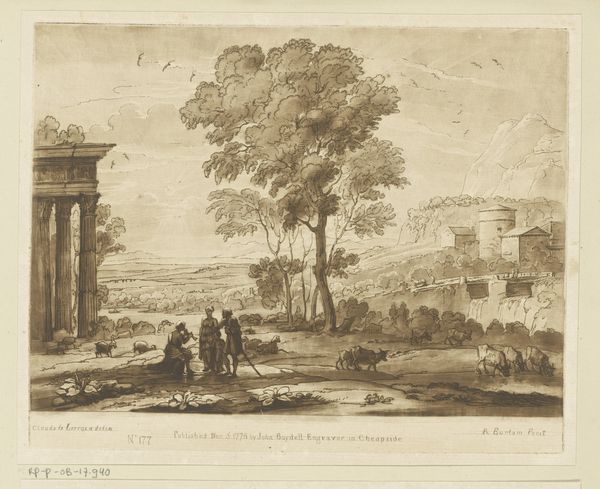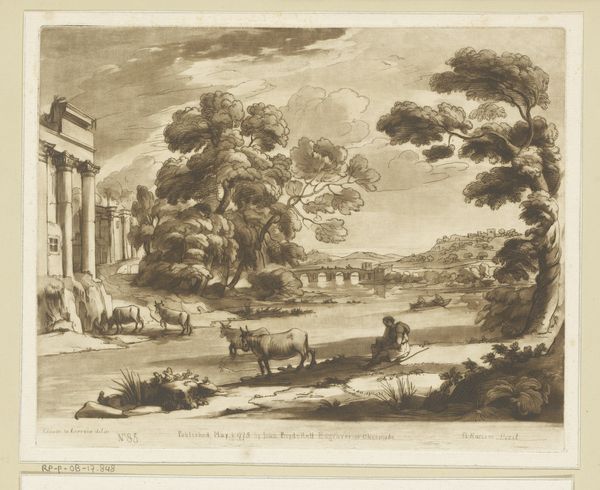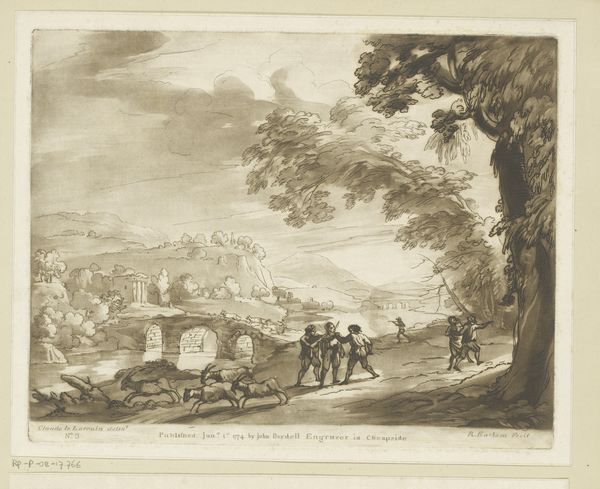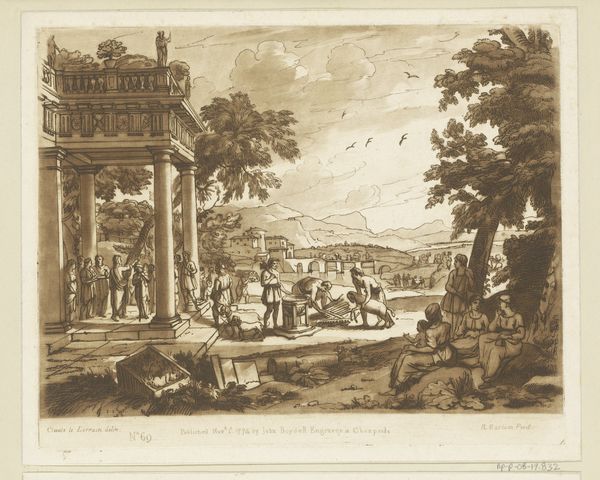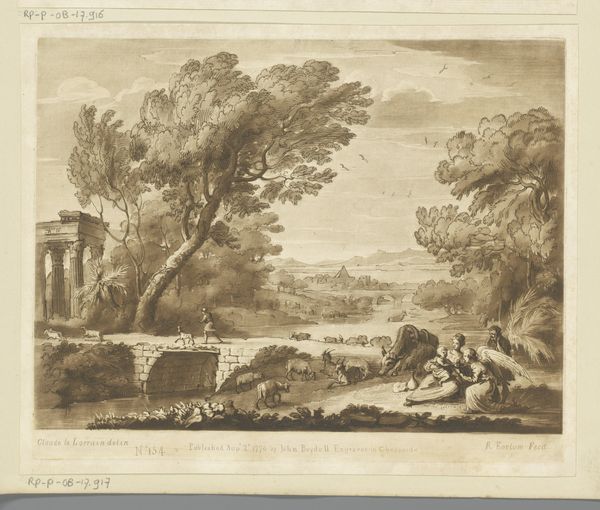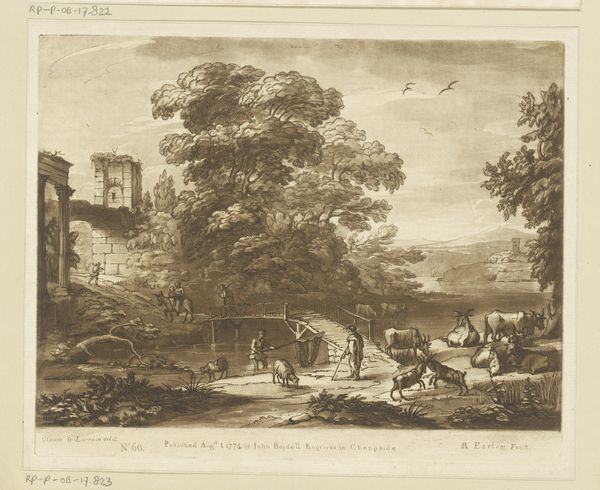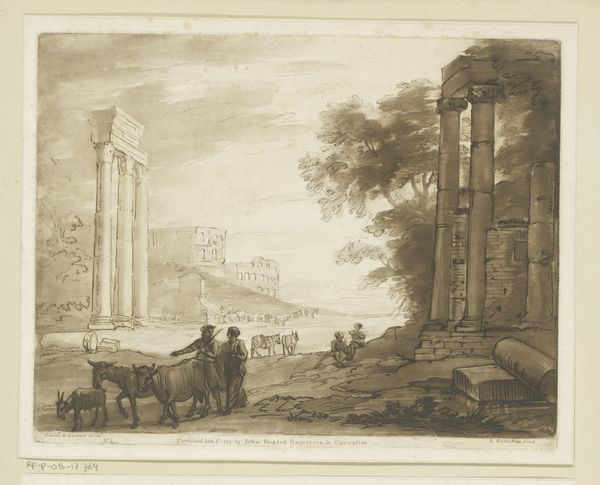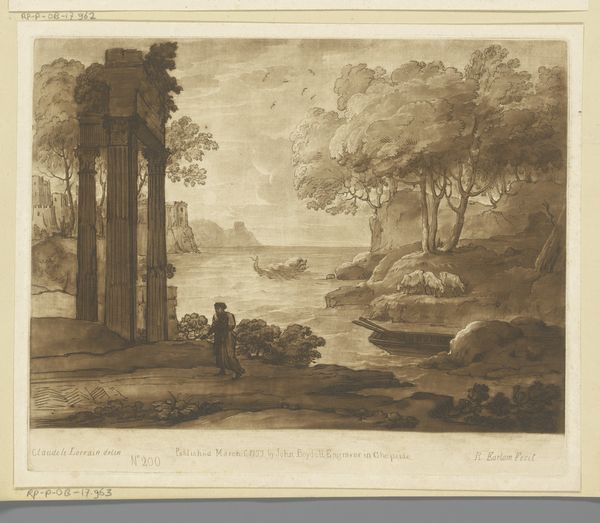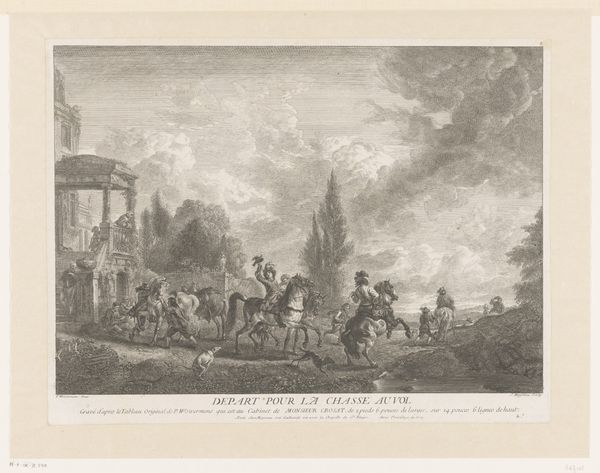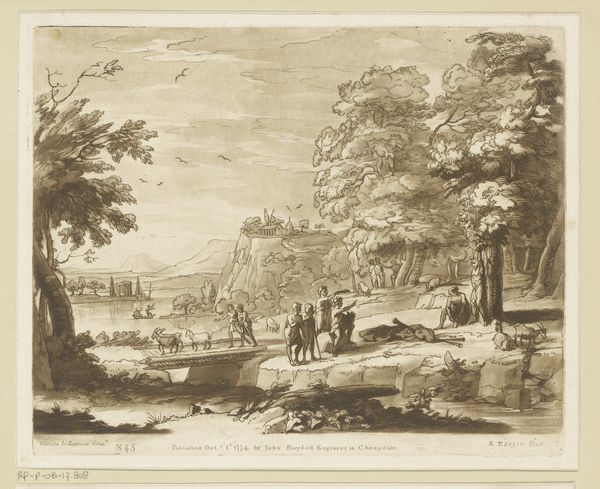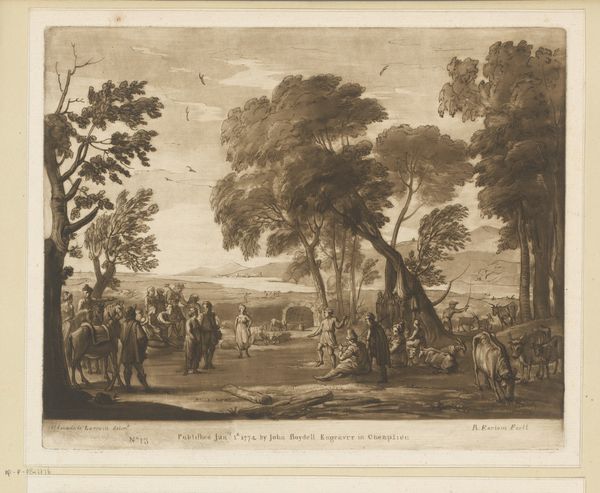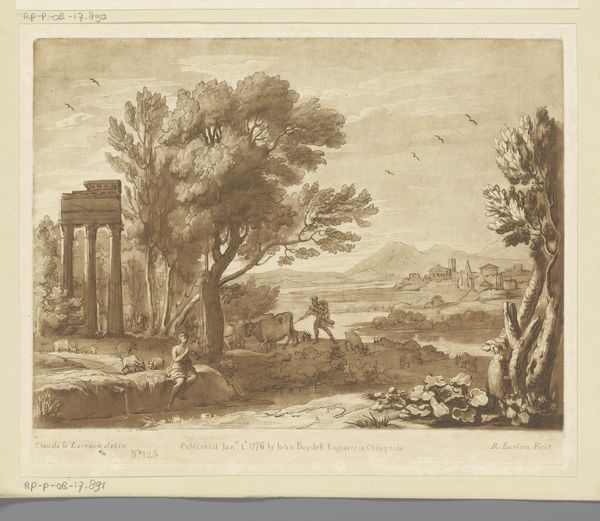
Dimensions: height 204 mm, width 257 mm
Copyright: Rijks Museum: Open Domain
Richard Earlom created this sepia print called "Landscape with Dancing Satyr and Nymph" in 1778. Earlom was an apprentice of Cipriani and a draughtsman for Boydell, but the landscape and figures are copied from an original drawing by the seventeenth century artist, Claude Lorrain. Here we see how images of Arcadia, filled with nymphs, satyrs and classical ruins, were very popular amongst collectors in Britain at the time. This vogue for classical imagery in the eighteenth century speaks to the dominance of institutions like the Royal Academy, which taught artists to see the classical world as a touchstone for beauty and truth. But it also tells us about the development of the publishing industry. Earlom’s print was made for a commercial publisher who wanted to reach a wide audience for this style of landscape. The appeal of this image can be better understood by delving into the history of collecting and the print trade in eighteenth-century Britain. Resources for this kind of research can be found in institutions like the British Library and the Paul Mellon Center for Studies in British Art.
Comments
No comments
Be the first to comment and join the conversation on the ultimate creative platform.

